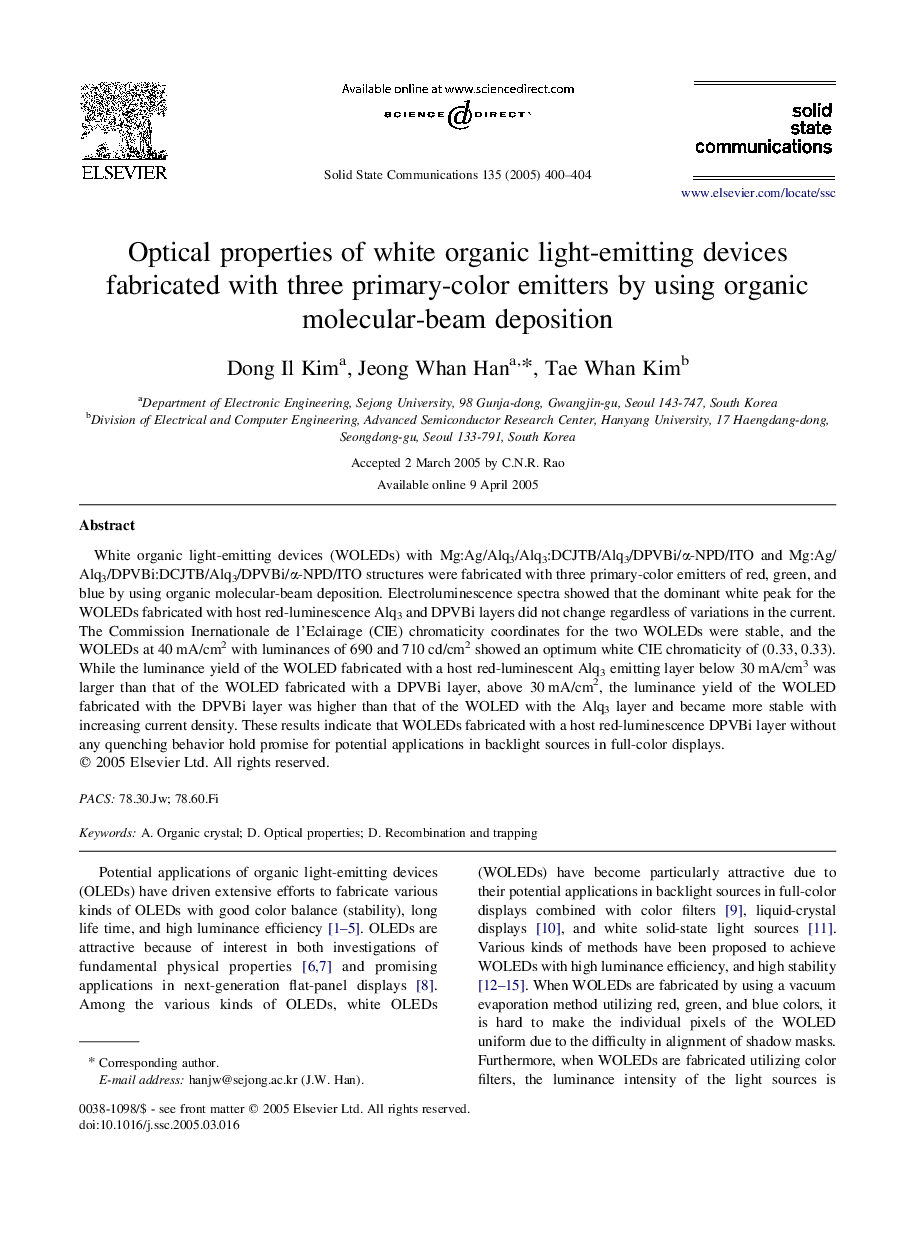| Article ID | Journal | Published Year | Pages | File Type |
|---|---|---|---|---|
| 10653202 | Solid State Communications | 2005 | 5 Pages |
Abstract
White organic light-emitting devices (WOLEDs) with Mg:Ag/Alq3/Alq3:DCJTB/Alq3/DPVBi/α-NPD/ITO and Mg:Ag/Alq3/DPVBi:DCJTB/Alq3/DPVBi/α-NPD/ITO structures were fabricated with three primary-color emitters of red, green, and blue by using organic molecular-beam deposition. Electroluminescence spectra showed that the dominant white peak for the WOLEDs fabricated with host red-luminescence Alq3 and DPVBi layers did not change regardless of variations in the current. The Commission Inernationale de l'Eclairage (CIE) chromaticity coordinates for the two WOLEDs were stable, and the WOLEDs at 40 mA/cm2 with luminances of 690 and 710 cd/cm2 showed an optimum white CIE chromaticity of (0.33, 0.33). While the luminance yield of the WOLED fabricated with a host red-luminescent Alq3 emitting layer below 30 mA/cm3 was larger than that of the WOLED fabricated with a DPVBi layer, above 30 mA/cm2, the luminance yield of the WOLED fabricated with the DPVBi layer was higher than that of the WOLED with the Alq3 layer and became more stable with increasing current density. These results indicate that WOLEDs fabricated with a host red-luminescence DPVBi layer without any quenching behavior hold promise for potential applications in backlight sources in full-color displays.
Related Topics
Physical Sciences and Engineering
Materials Science
Materials Science (General)
Authors
Dong Il Kim, Jeong Whan Han, Tae Whan Kim,
